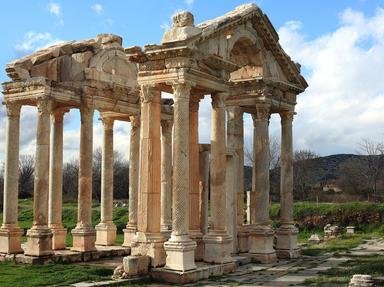
Heracles's Labor Locations Trivia Quiz
The Greek god Heracles (Roman: Hercules) completed 12 labors as penance for murdering his wife and children. The labors were tasks given to him by King Eurystheus after Heracles visited the Oracle of Delphi.
A collection quiz
by Joepetz.
Estimated time: 3 mins.
- Home
- »
- Quizzes
- »
- Humanities Trivia
- »
- Greek Myth
- »
- Herakles